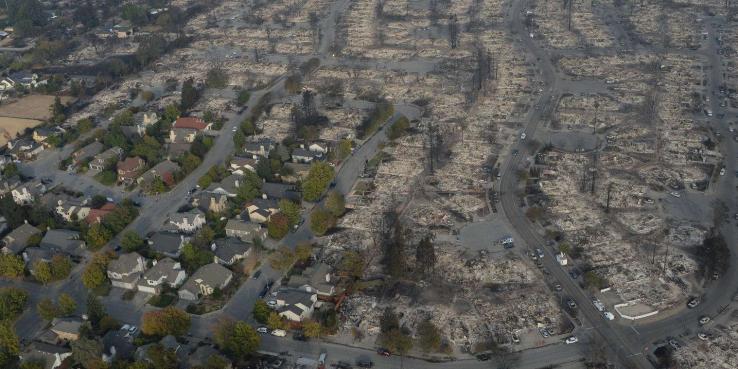Climate change is here today, and Californians know it. The Bay Area has experienced some of its worst effects acutely within the last year with the devastation of the North Bay fires in October 2017, followed by more than a week of hazardous air quality caused by the horrifying, fast-burning Camp Fire in Butte County just last month. We all watched the news of devastating flames in Mendocino County, Redding and Santa Monica in between these events. Six of California’s worst 10 wildfires have occurred in the last three years. The wildfires have not just resulted in many lives tragically lost, but they have destroyed so many homes that they are worsening our housing crisis: destroying homes faster than they are being built.
Wildfires have always been a part of California’s landscape, but as global temperatures climb, we may expect to have a longer fire season, larger and more destructive fires, and more fire-weather conditions leading to the potential for multiple simultaneous blazes to overwhelm firefighting response.
SPUR has only briefly written and made policy recommendations about fires, but this is about to change. In our 2011 report Climate Change Hits Home, we discussed a variety of potential climate impacts on the region including sea level rise, flooding and the likelihood of increased fire potential at the wildland-urban interface. We recommended that the Bay Area Air District develop a plan to deploy emergency air quality mitigation measures if regional air quality declines — such as from persistent or recurrent fires. And we discussed the need for strong county emergency communication measures to help people escape risks and hazards. We did not make land use, planning, building code, forest management or other recommendations, but we now know such changes may be needed to improve fire resiliency across the Bay Area. In 2019, as part of our forthcoming Regional Strategy, SPUR will be working on a new policy report that will look across multiple hazards wrought by climate change, including fires and flooding. This report will include recommendations about what local, regional or state government actions are needed now that these threats are already upon us.
Some have suggested that change in four key areas is necessary: First, land use and zoning to prevent further building and urban sprawl into super high-hazard areas; second, better forest management to remedy long-standing fire suppression policies that have led to a buildup of “fuel”; third, spark prevention from human activities as well as utility lines; and fourth, better communications and public warning systems to help people evacuate more quickly and efficiently. Others implicate California’s insurance policies and its governance system, building codes and state grants that use taxpayer money to subsidize fire prevention and fire-fighting in high-hazard areas. We will be looking at these and other ideas as our research moves forward.
Fires are likely going to only intensify as we experience the effects of climate change. We look forward to diving in to this important work in 2019.
In the meantime, healing for fire victims is paramount. To that end, please consider year-end gifts to:
- North Valley Community Foundation’s Camp Fire Relief Fund
- The Sonoma County Resilience Fund
- The Latino Community Foundation’s Norcal Wildfire Relief Fund
- The Rebuild North Bay Foundation
- Undocufund for Fire Relief in Sonoma County
